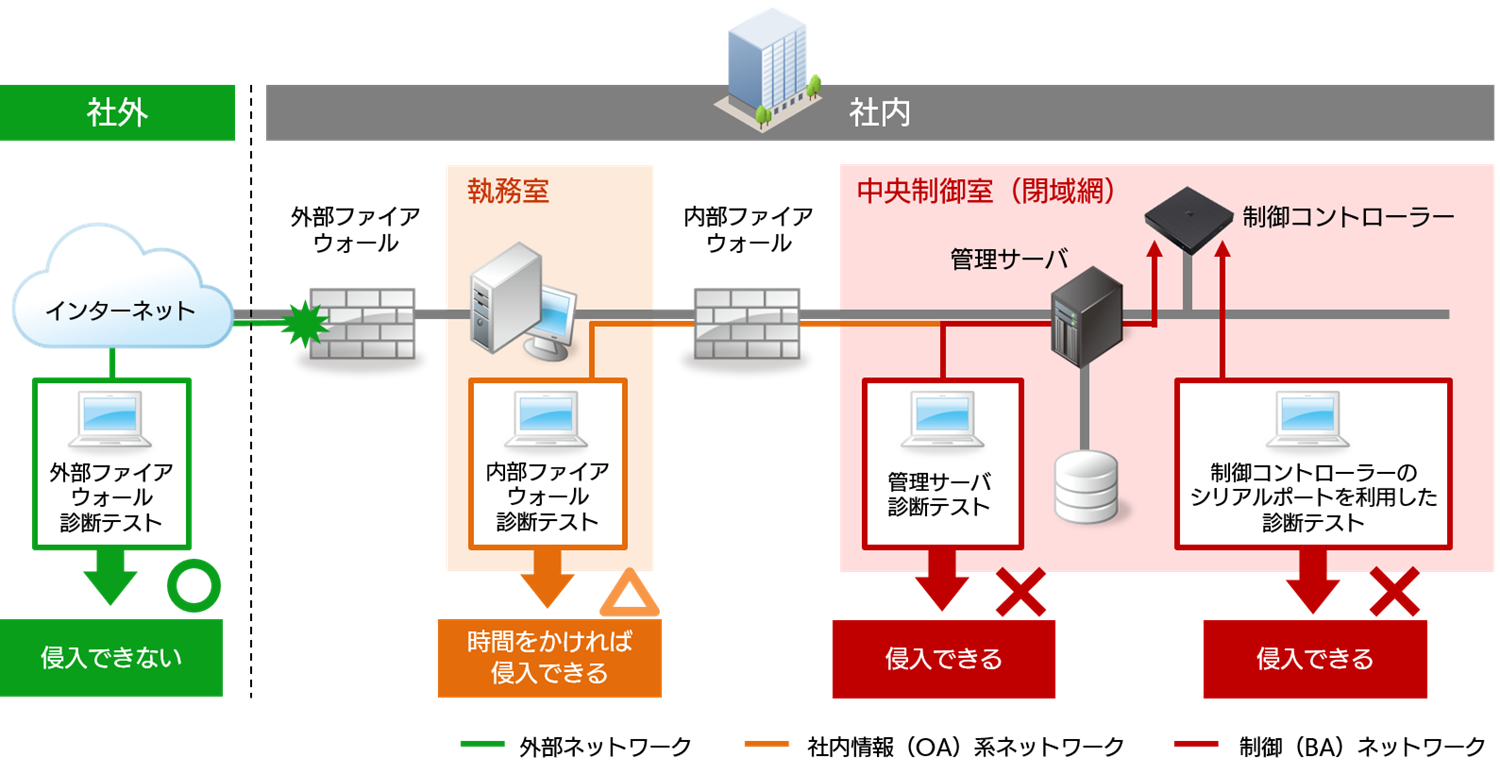Driving the development of security solutions for building automation systems
SoftBank Technology Corp.
Cybertrust Japan Co., Ltd.
SoftBank Technology Corp. (Headquarters: Shinjuku-ku, Tokyo, President: Shinichi Ata, hereinafter referred to as SBT) and Cybertrust Japan Co., Ltd. (Headquarters: Shinjuku-ku, Tokyo, President: Yasutoshi Magara, hereinafter referred to as Cybertrust Japan) are jointly building automation systems (hereinafter referred to as BA) with Takenaka Corporation (Headquarters: Chuo-ku, Osaka, President: Masahiro Miyashita, hereinafter referred to as Takenaka Corporation). *1 Conducted a demonstration experiment of security vulnerability diagnosis targeting the facility environment *2.
As a result, vulnerabilities were detected in cyber attacks via the internal information (OA) network as well as from the control (BA) network itself, which is assumed to operate on a closed network. This can cause damage such as unauthorized intrusion into servers (e.g., air conditioning subsystems, etc.) and equipment on the control (BA) network, or downing of power systems, air conditioning systems, lighting systems, etc. by infecting them with malware. It turns out it's possible.
Based on the results of this study, SBT and Cybertrust Japan, in collaboration with Takenaka Corporation, are implementing a control system that assumes operation via an internal information (OA) network and a closed network as a security measure for the BA facility environment. BA) We will promote the development of security solutions for BA based on the need to take countermeasures that anticipate physical attacks on devices in addition to intrusions from the network itself.

■Demonstration experiment results
The results of the penetration test*3 conducted in this demonstration experiment are as follows.
■Future developments
Based on the results of this demonstration experiment, we will promote the joint development of equipment security solutions for BA/FA (Factory Automation)/PA (Process Automation), and will promote the joint development of equipment security solutions for BA/FA (Factory Automation)/PA (Process Automation). We will strive to improve security awareness in the Smart Factory market based on Industry 4.0 and the Smart Factory market, and promote highly safe and secure automation.
Contact information for inquiries from media regarding this matter
○ SoftBank Technology Corp. Corporate Planning Department Corporate Communication Group
Email: sbt-pr@tech.softbank.co.jp